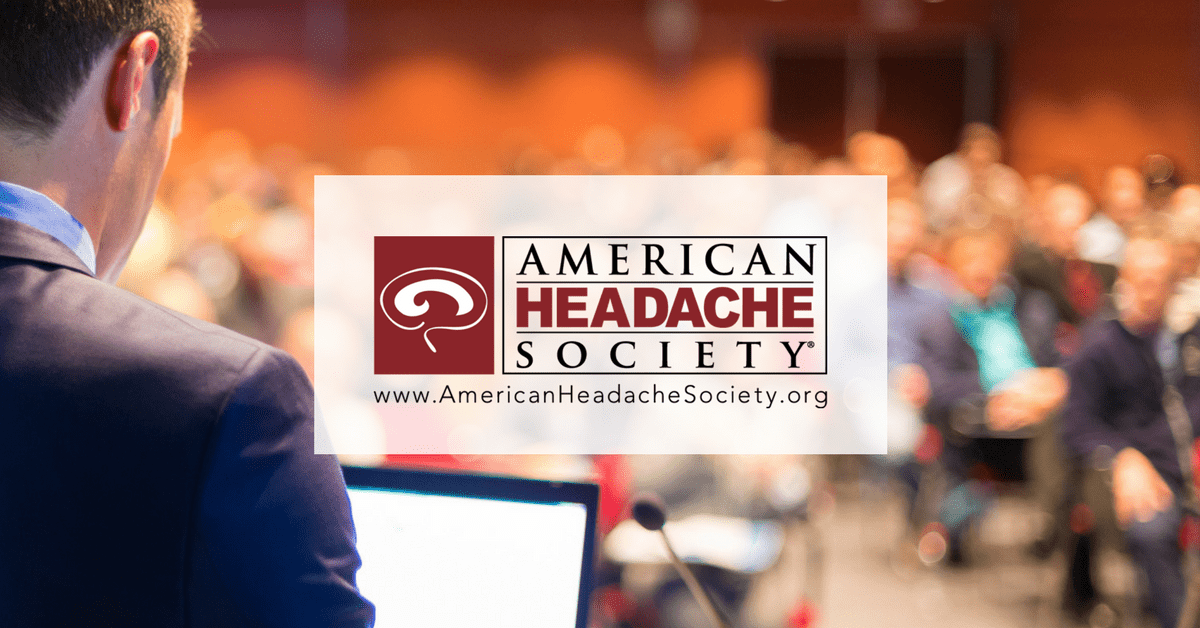
Recapping the 2017 Scottsdale Headache Symposium
An overview of our 2017 symposium that brought a record number of attendees together for five days of education and science
For five eventful days of collaboration, information-sharing, education and science, the American Headache Society hosted a record number of attendees this year at the 2017 Scottsdale Headache Symposium Nov. 16-19. This year’s program welcomed nearly 1,000 participants, from 15 countries around the world, who came to hear international leaders in Headache Medicine lecture on topics ranging from the latest scientific breakthroughs to clinical pearls to improve practice and patient outcomes.
The symposium kicked off with pre-meeting courses that ran from midday Wednesday through Thursday evening, each comprised of multiple presentations on related topics led by leading specialists and researchers. Our first pre-course was a pain symposium chaired by Stephen D. Silberstein, MD, FAHS and David W. Dodick, MD, FAHS. The session, comprised of seven presentations from some of the headache field’s top researchers, gave a comprehensive look at how pain functions in the human body. Kimberly Oas, APRN, FNP-BC, section chair of our Advanced Practice Provider Special Interest Section, also led a training session for nurse practitioners and physician assistants in primary care, along with co-moderator Maureen Moriarty, DNP, APRN. Their course, The Bridge, offered practicing NPs and PAs a comprehensive overview of the newest research in pediatric and adult headache pathophysiology, diagnosis and treatment. Advanced practice providers often represent the first step in a patient’s journey toward a proper headache diagnosis, making this type of outreach an integral part of our efforts to advance the Society’s mission.
Plenaries began Friday and included the inaugural Steven B. Graff-Radford Orofacial Pain and Headache Lectureship, which was awarded to Barry Sessle, BDS, BSc, MDS, PhD, DSc in recognition of his significant contributions to the field of headache research. This new lectureship was created to honor the late Dr. Graff-Radford, DDS, whose work helped transform dentistry’s role in the medical treatment of temporomandibular disorders. He was the first dentist to become a board member of the American Headache Society, and this lectureship reflects the legacy of his impact in the headache community.
Dr. Barry Sessle takes us through the science behind overlap and relevance with the Steven B. Graff-Radford Orofacial Pain and Headache Lectureship. #AHS17AZ pic.twitter.com/VkdKIBxlyf
— Stephanie Nahas (@stephanieJnahas) November 17, 2017
On Saturday, editor-in-chief of the journal Headache, Thomas Ward, MD, shared highlights from his publication during a plenary on this year’s most interesting research. Ward praised “Forecasting Individual Headache Attacks Using Perceived Stress: Development of a Multivariable Prediction Model for Persons With Episodic Migraine,” a study led by Timothy T. Houle, PhD, as one of the most fascinating pieces featured in Headache in 2017. He also highlighted the 2017 Wolff Award-winning study “Allodynia Is Associated With Initial and Sustained Response to Acute Migraine Treatment: Results from the American Migraine Prevalence and Prevention Study,” which was led by Richard B. Lipton MD. This study suggested that triptan response was worse when allodynia was present in a migraine at the time of treatment, the sensation of pain from non-painful stimuli.
On Saturday morning, the symposium held the second in what is now an annual plenary on the cutting edge in headache treatment. This year, lectures included discussions of the anti-CGRP drugs, both the gepants and monoclonal antibodies, neuromodulation, and the future of headache pharmacology.
The Scottsdale symposium also held concurrent sessions in the afternoons on a variety of specialty-focused topics, including women’s issues, wellness and practice management. Many participants said their biggest challenge during the event was choosing between equally interesting concurrent sessions. Luckily, many AHS members helped us build a vibrant archive of the week’s activities by live-tweeting highlights from each event, helping attendees catch up on the sessions they couldn’t attend, and giving those who couldn’t make it to Scottsdale a front-row seat for some of our key programming. To relive the happenings from the 2017 Scottsdale Headache Symposium, visit the #AHS17AZ hashtag on Twitter.
Dr. Stonnington: Cultivating resilience to buffer stress is important for our patients & ourselves. #AHS17AZ pic.twitter.com/7Nn3BQlNbT
— Rebecca Erwin Wells (@RebeccaWellsMD) November 18, 2017
The American Headache Society would like to thank all of our members and sponsors for a spectacular week dedicated to sharing knowledge and further advancing our understanding of Headache Medicine. There truly has never been a more exciting time to be involved in the field of Headache Medicine, and we can’t wait to see what next year’s symposium will bring.


